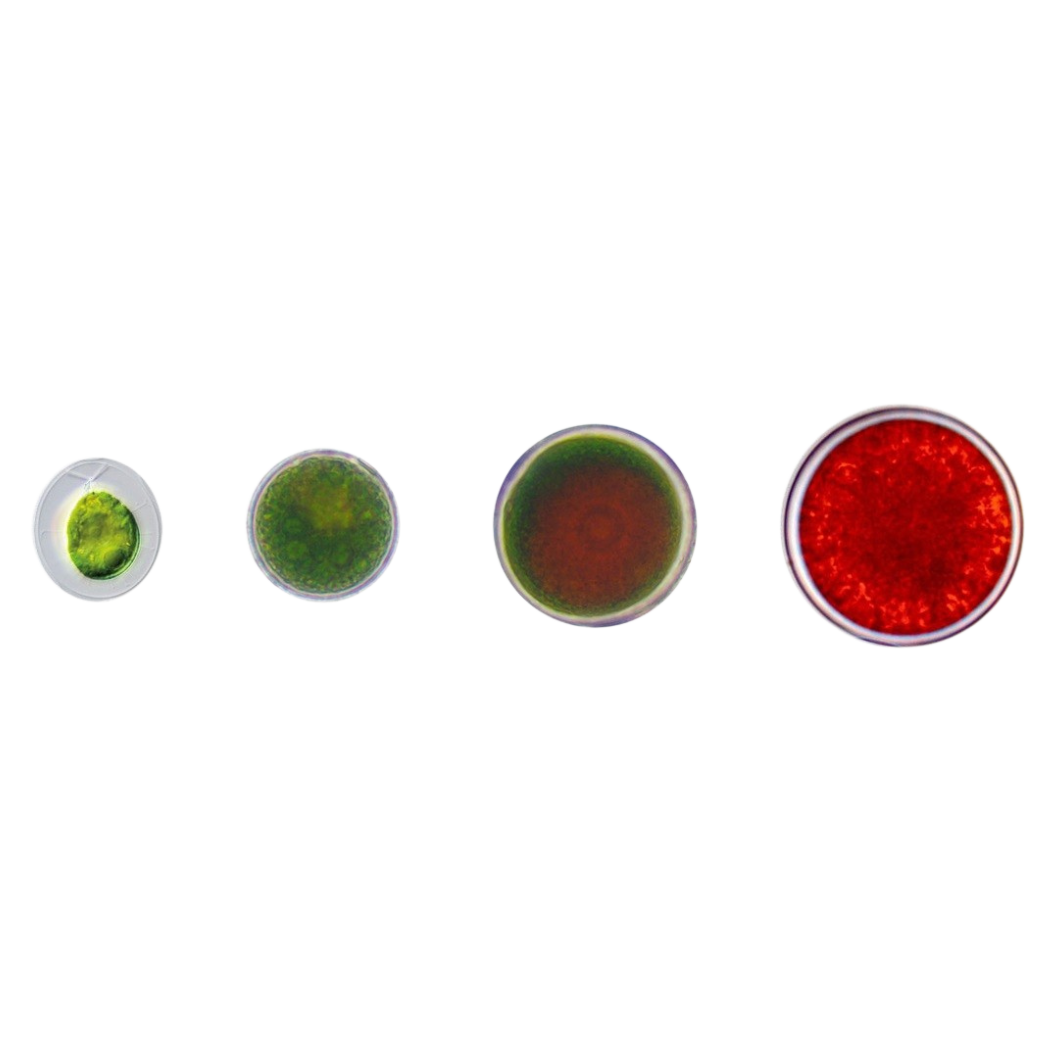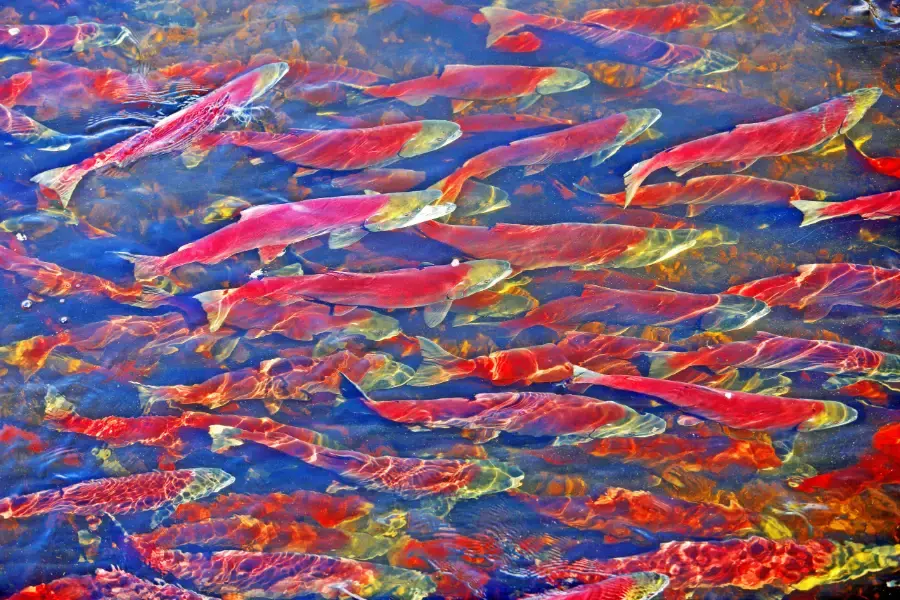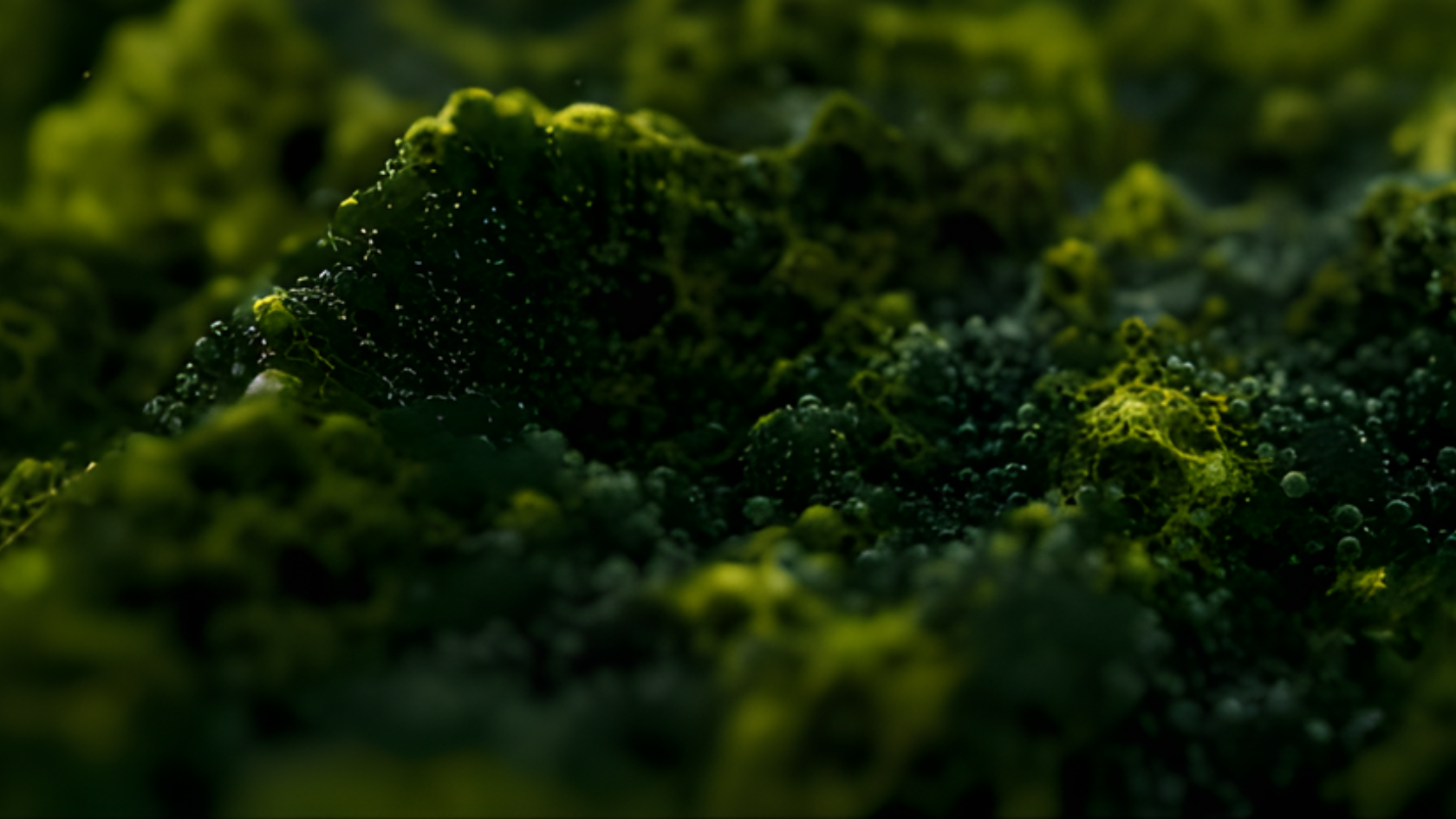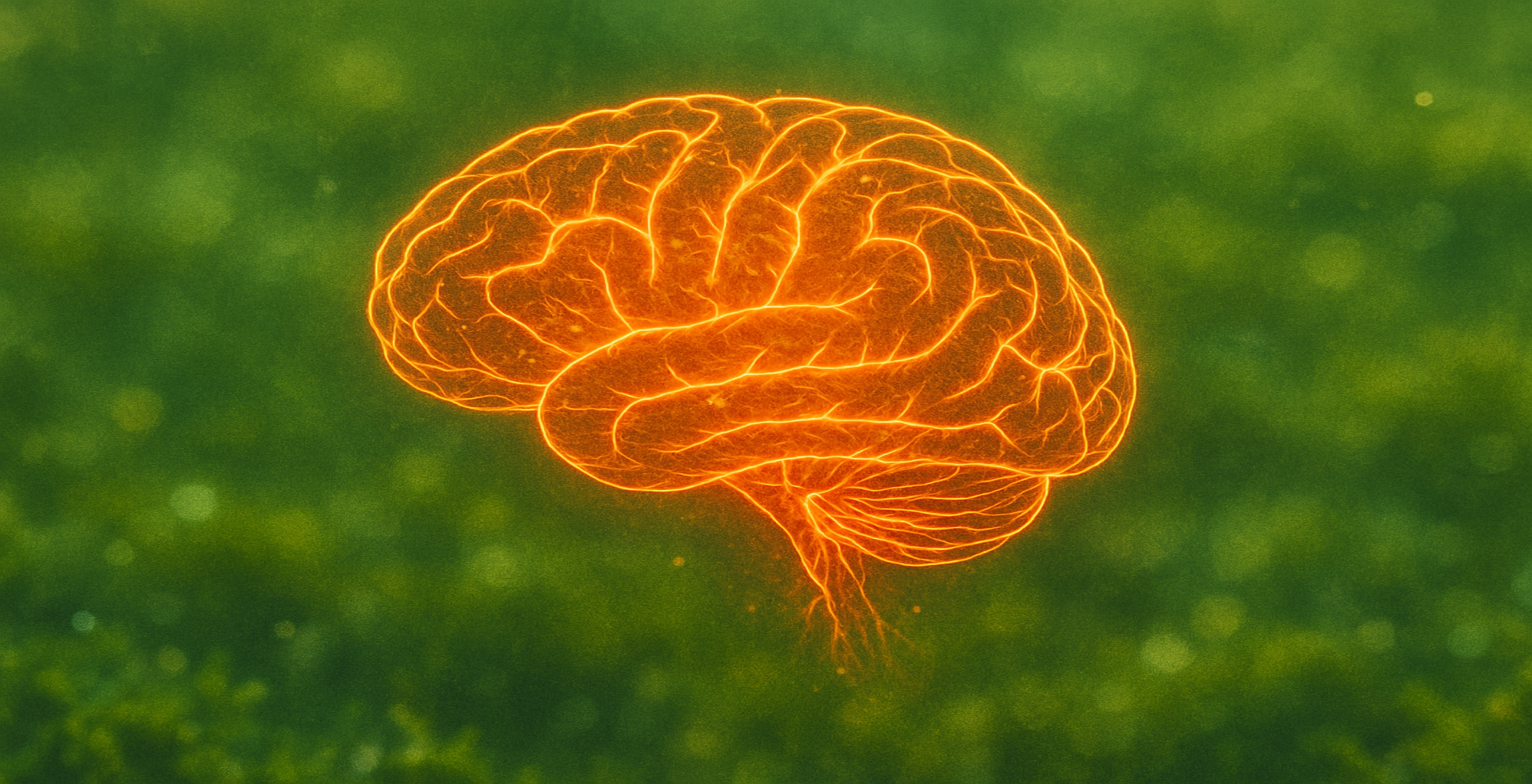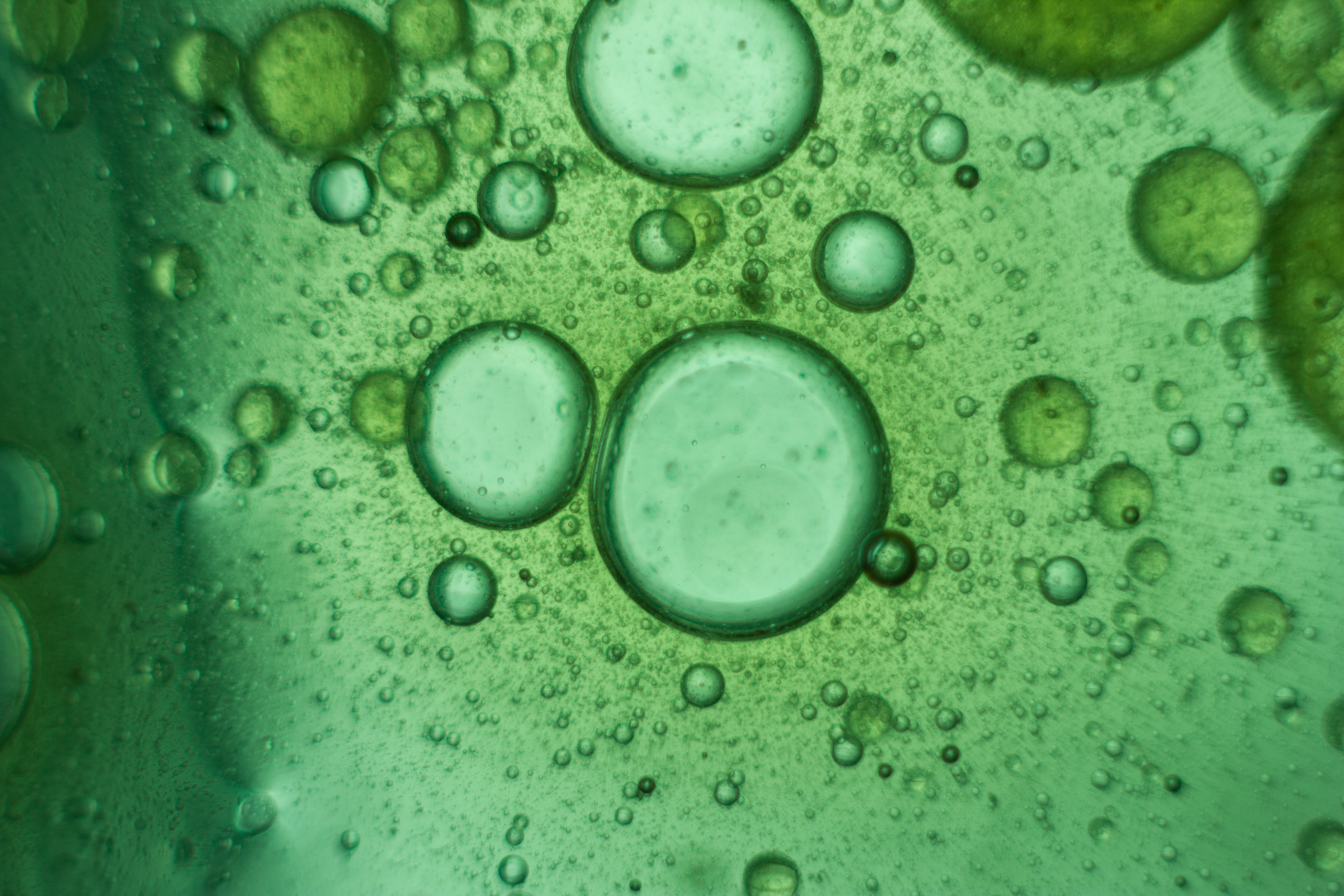Table of contents
Astaxanthin Benefits for Skin: What Science Says
Astaxanthin's Unique Absorption and Distribution in Skin Tissue
Natural vs. Synthetic Astaxanthin for Skin: Critical Differences
How to Choose the Best Astaxanthin for Skincare Formulations
Before and After: Visual Results from Astaxanthin Clinical Studies
Top 8 Skin Benefits of Astaxanthin backed by studies
Astaxanthin Skin Results Timeline: Insights from Clinical Studies
Is Astaxanthin a Better Antioxidant Than Vitamin C and E?
Astaxanthin Dosage & Formulation: What Works Best?
Topical vs. Oral Astaxanthin: Which is More Effective for Skin?
Axabio's Premium Astaxanthin: The Clean Label Choice for Superior Skin Products

Maarten Muys
Dr. ir. Maarten Muys holds a masters degree in Environmental Technology and a PhD in Bioengineering. He specialized in sustainable microbial protein production and microalgae cultivation. Maarten has amassed over 12 years of experience in algae cultivation and has published numerous paper on the topic.
Astaxanthin Benefits for Skin: Science-Based Effects
Have you ever wondered how salmon maintain their vibrant color and robust health while swimming upstream through harsh conditions? The secret lies in astaxanthin – nature's most powerful antioxidant that's revolutionizing skincare and anti-aging science¹.
This remarkable red-pink compound doesn't just give salmon their distinctive color – it provides unparalleled protection against UV damage, oxidative stress, and inflammation – benefits that translate directly to healthier, more youthful-looking human skin².
In this comprehensive guide to astaxanthin skin benefits, you'll discover exactly why leading dermatologists and premium skincare brands are calling this ingredient "the future of anti-aging" – and how its extraordinary properties can deliver visible results for every skin type and concern.
Astaxanthin Benefits for Skin: What Science Says
Astaxanthin is a naturally occurring carotenoid pigment primarily produced by the microalga Haematococcus pluvialis when under environmental stress¹. What makes astaxanthin uniquely valuable for skin health is its extraordinary molecular structure – a structure that gives it antioxidant capabilities up to 6,000 times more powerful than vitamin C and 550 times more potent than vitamin E.
This marine-derived compound has gained significant attention in dermatological research for its ability to:
- Combat free radical damage throughout all skin layers²
- Protect skin cells against UV-induced stress³
- Reduce inflammatory responses that accelerate skin aging⁴
- Support skin's natural moisture retention mechanisms⁵
- Enhance collagen preservation and production⁶
Unlike many trending ingredients, astaxanthin's benefits for skin are supported by extensive clinical research, with studies consistently demonstrating measurable improvements in skin elasticity, moisture levels, wrinkle reduction, and UV protection².³
As a formulator or brand leader, understanding astaxanthin's molecular advantages gives you a powerful edge in creating products that deliver genuine, visible results.
Want to dive deeper into how natural astaxanthin works? Learn about its cellular mechanisms, antioxidant properties, and why Haematococcus pluvialis-derived astaxanthin is the superior choice in our comprehensive guide on astaxanthin.
Astaxanthin's Unique Absorption and Distribution in Skin Tissue
What truly sets astaxanthin apart from conventional skincare antioxidants is its remarkable absorption profile and multi-layer protective capacity. Unlike water-soluble antioxidants that primarily protect the cellular exterior or fat-soluble compounds that protect only the inner membrane, astaxanthin's unique molecular structure allows it to span the entire cell membrane.²
This distinctive property creates several significant advantages for skin health:
- Complete cellular protection: Astaxanthin embeds itself across the entire cell membrane, protecting both the water-soluble and lipid-soluble portions simultaneously17
- Superior penetration: Research demonstrates that astaxanthin can reach the dermis layer when applied topically in appropriate delivery systems 18
- Accumulative protection: When taken orally, astaxanthin distributes to all skin layers within 24-48 hours, with concentrations remaining stable for up to 4 weeks with continued use19
- Cellular affinity: Shows affinity for cellular structures, providing protection to various skin cell types including those responsible for collagen production20
This comprehensive distribution profile explains why astaxanthin shows such remarkable efficacy in human studies—it doesn't just protect a single component of skin cells but provides a continuous shield across multiple skin structures and layers.2,17
Natural vs. Synthetic Astaxanthin for Skin: Critical Differences
The source of your astaxanthin significantly impacts its efficacy in skincare and nutraceutical applications. Not all astaxanthin is created equal – a critical distinction that affects product performance, consumer satisfaction, and brand positioning.
Natural Astaxanthin for Skin Benefits: Natural astaxanthin derived from Haematococcus pluvialis contains predominantly the 3S,3'S stereoisomer – the molecular configuration research identifies as most biologically active³. This specific structure enables superior free radical neutralization and enhanced cellular protection. Clinical studies consistently demonstrate that natural astaxanthin delivers significantly higher bioavailability and skin efficacy compared to synthetic alternatives².
Synthetic Astaxanthin Limitations: Synthetic astaxanthin, produced through petrochemical processes, contains a different stereoisomer profile that doesn't match what's found in nature. This fundamental structural difference results in reduced antioxidant capacity, lower stability, and diminished bioavailability – all directly impacting its effectiveness for skin health applications².
Leading skincare and nutraceutical brands increasingly choose natural astaxanthin specifically for its proven superior performance in addressing multiple skin concerns – from photoaging and wrinkle formation to moisture retention and overall skin resilience.
Get exclusive access to our white papers comparing natural vs. synthetic astaxanthin, featuring the latest scientific studies. Or, explore the key differences, bioavailability, and health impacts in our in-depth guide on natural vs. synthetic astaxanthin.
How to Choose the Best Astaxanthin for Skincare Formulations
For skincare formulators and product developers, selecting the optimal astaxanthin source can dramatically impact product efficacy, stability, and performance. Not all astaxanthin on the market delivers the same results, with source and processing methods creating significant quality variations.^26^
Critical Quality Markers for Skincare Applications
When evaluating astaxanthin for professional skincare formulations, consider these 5 evidence-based criteria:
- Stereoisomer profile: Natural astaxanthin from Haematococcus pluvialis contains predominantly the 3S,3'S stereoisomer—the molecular configuration research identifies as most biologically active26
- Production method: Controlled cultivation systems aim to minimize environmental variability and potential contamination compared to open cultivation methods^1^
- Extraction technique: Supercritical CO₂ extraction preserves astaxanthin's molecular integrity while avoiding solvent residues that can cause formula instability27
- Concentration verification: Third-party HPLC testing confirms actual astaxanthin content versus label claims—essential for dosage-dependent benefits28
- Stability profile: Natural astaxanthin with verified shelf-life testing ensures the active remains potent throughout your product's lifecycle29
Red Flags to Avoid When Choosing Astaxanthin Supplier
Be wary of suppliers offering:
- Significantly lower pricing (often indicates synthetic astaxanthin with inferior stereoisomer profiles)26
- Lack of detailed specifications on exact isomer content26
- Missing stability data in various carrier systems29
- Inconsistent coloration between batches28
The research clearly demonstrates that natural, properly-processed astaxanthin from Haematococcus pluvialis provides superior free radical neutralization and enhanced cellular protection compared to synthetic alternatives—a critical distinction for performance-driven skincare formulations.1,26
Before and After: Results on Skin from Astaxanthin Clinical Studies
Clinical research consistently demonstrates measurable, visible improvements in skin appearance with astaxanthin supplementation. The landmark study by Tominaga et al. documented the following transformations after just 8 weeks of daily astaxanthin intake4:
- Wrinkle reduction: Participants showed an average 50% decrease in fine line depth around the eyes4
- Moisture enhancement: Skin hydration increased by up to 51% in the supplementation group4
- Elasticity improvement: Dermal elasticity measurements showed a 42% improvement versus control group4
These objective measurements translated to visible transformations that both participants and independent evaluators could observe. What makes these results particularly noteworthy is their comprehensive nature—unlike many skincare ingredients that address only one aspect of skin aging, astaxanthin simultaneously improved multiple skin parameters.
In follow-up studies, researchers documented:
- Studies suggest potential fading of age spots and hyperpigmentation, with measurable improvements observed in clinical studies after 12 weeks21
- Noticeable reduction in skin roughness beginning at week 4,22
- Improved skin texture uniformity as measured by digital analysis4
- Enhanced skin radiance and luminosity per blinded evaluator assessment12
These findings underscore why astaxanthin has gained such attention in advanced skincare development—it delivers visually apparent results across multiple dimensions of skin appearance.4,12
Top 8 Skin Benefits of Astaxanthin backed by studies
Natural astaxanthin, known as one of the most powerful antioxidants, provides a variety of health benefits. While this article highlights eight key ways it supports skin health, its advantages go well beyond skincare. Discover how astaxanthin supports cardiovascular health, vision, cognitive function, gut health, energy levels, and more in our comprehensive guide on the full benefits of natural astaxanthin
1. Superior UV Protection and Anti-Photoaging Effects
Sun exposure remains the primary accelerator of premature skin aging. What makes astaxanthin revolutionary for skin protection is its ability to shield against UV damage from within. Clinical research demonstrates that astaxanthin significantly increases the skin's minimal erythema dose (MED) – the amount of UV exposure needed to cause redness³⁻⁶.
This internal photoprotection works by:
- Neutralizing reactive oxygen species generated during UV exposure⁴
- Maintaining skin's moisture barrier under sun stress²,³
- Reducing UV-induced inflammation that triggers collagen breakdown⁵
- Preventing DNA damage in skin cells⁶
A groundbreaking study by Tominaga et al. found that subjects taking 6mg of astaxanthin daily showed a 50% reduction in fine lines and wrinkles after just 8 weeks⁴. Multiple systematic reviews have further confirmed these findings, with a 2021 meta-analysis by Zhou et al. demonstrating consistent improvements in skin elasticity, wrinkle depth, and moisture content across numerous clinical trials¹².
2. Powerful Anti-Aging and Anti-Wrinkle Activity
Astaxanthin's impact on visible signs of aging stems from its exceptional ability to protect the dermal matrix – the structural foundation of youthful skin. Research by Suganuma et al. revealed that astaxanthin significantly inhibits matrix metalloproteinases (MMPs), the enzymes responsible for breaking down collagen during aging⁵.
This collagen-protective effect translates to measurable improvements in:
- Skin elasticity and firmness (+42% in clinical studies)⁴
- Fine line and wrinkle reduction (visible results within 6-8 weeks)
- Skin texture smoothness and refinement
- Overall facial contour maintenance
By preserving existing collagen and supporting fibroblast function, astaxanthin helps maintain the skin's structural integrity more effectively than many traditional anti-aging ingredients.
3. Enhanced Skin Moisture and Hydration
Dry, dehydrated skin appears older and more wrinkled. Astaxanthin addresses this fundamental aspect of skin aging through a unique biological mechanism: upregulating aquaporin-3, a protein channel that facilitates water transport into skin cells⁹.
Clinical studies demonstrate that astaxanthin supplementation:
- Increases skin moisture content by up to 51% after 6 weeks⁴
- Reduces transepidermal water loss (TEWL)
- Strengthens the skin's natural moisture barrier
- Improves skin's suppleness and luminosity
This moisture-enhancing effect creates both immediate and cumulative benefits, with participants in clinical trials reporting noticeably more hydrated, comfortable skin within weeks of beginning astaxanthin supplementation.
4. Reduction in Hyperpigmentation and Age Spots
Uneven skin tone and dark spots rank among consumers' top skincare concerns. Astaxanthin helps address this through multiple pathways: reducing oxidative damage that triggers melanin production, calming inflammatory responses that can cause post-inflammatory hyperpigmentation, and supporting cellular repair mechanisms.
Singh et al. (2020) demonstrated that astaxanthin inhibits melanogenesis through the suppression of tyrosinase activity and related signaling pathways¹¹. Additionally, the antityrosinase properties of astaxanthin were confirmed by Chintong et al. (2019), showing significant inhibition comparable to other natural agents¹³.
Research shows that consistent astaxanthin use can:
- Visibly fade existing age spots and sun damage
- Even out skin tone discrepancies
- Reduce the appearance of freckles and melasma
- Brighten overall complexion
These benefits make astaxanthin particularly valuable for comprehensive anti-aging formulations targeting multiple visible signs of aging simultaneously.
5. Accelerated Wound Healing and Skin Recovery
An often-overlooked aspect of astaxanthin's skin benefits is its ability to enhance tissue repair and regeneration. Recent research reveals that astaxanthin promotes M2 macrophage polarization – a critical phase in the wound healing process that accelerates tissue rebuilding¹⁰.
This makes astaxanthin exceptionally valuable for:
- Post-procedure recovery products
- Treatments for compromised or sensitized skin
- Solutions for acne-damaged skin
- General skin resilience formulations
By supporting the skin's natural repair mechanisms, astaxanthin helps maintain overall skin health and accelerate recovery from environmental damage.
6. Anti-Inflammatory and Sensitive Skin Support
Chronic inflammation underlies many common skin concerns, from premature aging to redness and reactivity. Astaxanthin's potent anti-inflammatory properties make it ideal for calming irritated, sensitive skin conditions.
Research demonstrates astaxanthin's ability to:
- Suppress pro-inflammatory cytokines⁶,⁷
- Reduce visible redness and irritation
- Soothe reactive skin
- Support healthy inflammatory responses
These properties make astaxanthin particularly valuable for sensitive skin formulations where other active ingredients might cause irritation.
7. Metabolic Balance for Healthier Skin
Emerging research reveals an important connection between metabolic health and skin appearance. Insulin resistance and metabolic imbalances can accelerate skin aging through increased inflammation and glycation of skin proteins.
A groundbreaking study by Ni et al. demonstrated that astaxanthin prevents and reverses diet-induced insulin resistance in mice¹⁴. This metabolic benefit translates to skin health in several ways:
- Reduced advanced glycation end-products (AGEs) that cause collagen stiffening
- Decreased systemic inflammation that contributes to skin aging
- Improved microcirculation for better nutrient delivery to skin cells
- Enhanced cellular energy metabolism for optimal skin function
For formulators developing comprehensive "beauty from within" products, astaxanthin's metabolic benefits provide an additional mechanism for supporting skin health from the inside out.
8. Gut-Skin Axis Support
The gut-skin axis is increasingly recognized as a crucial factor in skin health and appearance. Gut microbiome imbalances can manifest as skin issues through increased inflammation, impaired barrier function, and altered immune responses.
Research by Liu et al. has shown that astaxanthin positively modulates gut microbiota composition¹⁵, which may indirectly benefit skin health by:
- Supporting beneficial bacteria that reduce systemic inflammation
- Improving intestinal barrier function to prevent inflammatory triggers
- Enhancing nutrient absorption important for skin health
- Regulating immune responses that affect skin conditions
This gut-skin connection makes astaxanthin particularly valuable in holistic formulations addressing skin health through multiple pathways simultaneously.
Astaxanthin Skin Results Timeline: Insights from Clinical Studies
It's important to note that this timeline represents a synthesis of observations from separate clinical studies, not a universal progression that all users will experience. Additionally, study 22 (Yoon et al.) specifically examined astaxanthin combined with collagen hydrolysate, which may produce different results than astaxanthin alone.
With these qualifications in mind, here's what research suggests might be observed over time:
Week 1-2
- Some initial improvements in skin hydration may become measurable in laboratory settings, though not necessarily visible to the naked eye22
- Study participants taking astaxanthin with collagen showed early changes in skin moisture retention22
- Early markers of reduced oxidative stress have been documented in research settings30
Week 3-4
- In the Tominaga study, some participants began noting subjective improvements in skin feel4
- The Yoon study combining astaxanthin with collagen observed initial reductions in skin roughness22
- Some studies report early improvements in the appearance of redness and irritation7
Week 6-8
- The Tominaga study documented significant improvements in measured wrinkle parameters after 8 weeks of supplementation4
- Skin elasticity improvements were quantified in the 6-8 week timeframe in multiple studies4
- Initial visible changes in overall skin appearance are typically noted within this timeframe4
Week 10-12
- Longer-term studies suggest continued improvements may occur with consistent use12
- Studies measuring photoprotection found optimal results after 10+ weeks of supplementation23
- Long-term collagen preservation effects would theoretically manifest after sustained use5
These observations cannot predict individual results, which vary significantly based on skin type, age, lifestyle factors, concurrent skincare practices, dosage, and whether astaxanthin is taken alone or combined with other actives like collagen. The timeline is offered as a general reference based on published research rather than a guaranteed progression.4,22
Is Astaxanthin a Better Antioxidant Than Vitamin C and E?
When formulating premium skincare or nutraceuticals, understanding the comparative advantages of different antioxidants is crucial. Astaxanthin stands apart from even the most well-established antioxidants in several key ways.
Superior to Vitamin C for Skin (Ascorbic Acid): While vitamin C is justifiably popular for brightening and collagen synthesis, it has significant limitations. It oxidizes rapidly in formulations, requires precise pH conditions to remain stable, and works primarily in water-soluble environments. Astaxanthin, by contrast, maintains stability under various conditions, doesn't require specific pH ranges, and offers significantly stronger free-radical neutralizing capacity in comparative tests4,5,13.
More Effective than Vitamin E (Tocopherol): Vitamin E has long been valued for its lipid-phase protection, but astaxanthin's molecular structure allows it to span both water and fat-soluble cellular components – providing more comprehensive protection. Laboratory analysis shows astaxanthin neutralizing singlet oxygen (a particularly damaging free radical) 550 times more effectively than vitamin E⁴.
Beyond Beta-Carotene: Unlike beta-carotene, which converts to vitamin A and can potentially accumulate to concerning levels, astaxanthin doesn't convert to vitamin A. This eliminates toxicity concerns while delivering substantially stronger antioxidant protection¹⁻³.
This exceptional performance profile makes astaxanthin an ideal centerpiece for advanced skincare formulations targeting optimal protection against environmental aging factors.
This exceptional performance profile makes astaxanthin an ideal centerpiece for advanced skincare formulations targeting optimal protection against environmental aging factors.
Astaxanthin Dosage & Formulation: What Works Best?
Optimal Astaxanthin Dosages for Skin Benefits
For Oral Supplements: Clinical research consistently shows skin benefits emerging at daily dosages between 4-12mg of astaxanthin 2,4. Lower doses (2-4mg) may provide basic antioxidant support, while higher doses (6-12mg) more consistently demonstrate measurable improvements in skin elasticity, moisture, and wrinkle reduction. For premium anti-aging formulations, 6mg daily represents an evidence-based sweet spot that balances efficacy and value.
For Topical Applications: Effective topical concentrations typically range from 0.01-0.1% natural astaxanthin. The lipophilic nature of astaxanthin makes oil-based delivery systems particularly effective for skin penetration. Axabio's high-purity astaxanthin integrates exceptionally well into advanced cosmetic systems without compromising stability or aesthetic properties.
Delivery Systems for Maximum Efficacy
For Supplements:
- Oil-based softgels enhance the absorption of this fat-soluble compound
- Liposomal and micellar formulations can further improve bioavailability
- Emulsified liquid forms offer alternatives for those who prefer non-pill options
For Skincare:
- Oil-based serums maximize penetration and activity
- Anhydrous formulations preserve stability and potency
- Microencapsulation technologies can enhance delivery to deeper skin layers
Strategic Ingredient Combinations
Astaxanthin's benefits can be amplified through strategic pairing with complementary actives:
With Retinol & Ceramides: Astaxanthin's anti-inflammatory properties help counterbalance potential retinol irritation, while both ingredients support collagen health through different mechanisms. Adding ceramides creates a comprehensive formulation that addresses both structural aging and barrier function – ideal for mature skin.
With Hyaluronic Acid: This combination creates a powerful hydration strategy. While hyaluronic acid provides immediate surface hydration by binding water, astaxanthin supports long-term moisture balance by influencing aquaporin-3 expression. Together, they address both immediate and underlying causes of skin dehydration.
With Peptides & Niacinamide: Combine astaxanthin with peptides for multi-pathway collagen support: peptides provide signaling molecules that stimulate collagen production, while astaxanthin protects existing collagen from degradation. Adding niacinamide enhances barrier function and provides complementary brightening benefits.
Topical vs. Oral Astaxanthin: Which is More Effective for Skin?
The astaxanthin delivery method significantly impacts its skin benefits. Both topical application and oral supplementation offer distinct advantages, with comprehensive research now clarifying the optimal approach for different skin concerns.31
Topical Astaxanthin Advantages
When properly formulated in suitable delivery systems, topical astaxanthin:
- Provides direct antioxidant protection to the epidermis32
- Shows measurable improvements in skin moisture retention within 1-2 weeks33
- Creates an immediate protective barrier against environmental stressors34
- Works well in targeted treatments for specific skin concerns32
For maximum efficacy, topical astaxanthin requires specialized delivery systems to overcome its highly lipophilic nature. Microemulsions, liposomal systems, and oil-based serums have demonstrated superior penetration and results in clinical testing.33
Oral Supplementation Advantages
Research demonstrates that oral astaxanthin:
- Reaches all skin layers (including the dermis where collagen is produced)19
- Provides 24-hour continuous protection from within35
- Accumulates in various skin tissues and cells20
- Creates a reservoir effect with benefits lasting several weeks after supplementation19
This comprehensive distribution explains why clinical studies consistently show more dramatic improvements in skin elasticity, wrinkle reduction, and structural parameters with oral supplementation.4
The Synergistic Approach
While research on the combined approach is still emerging, preliminary evidence suggests that both delivery methods may offer complementary benefits.31
- Oral astaxanthin (4-6mg daily): For foundational, whole-body skin support and structural improvements
- Topical astaxanthin (0.01-0.1%): For targeted, intensive treatments and immediate surface protection
This synergistic strategy leverages astaxanthin's unique properties through complementary delivery systems. Theoretical models suggest combining oral and topical astaxanthin could provide enhanced results in moisture retention, barrier function, and visible wrinkle reduction compared to either approach alone.31
For formulation professionals developing comprehensive skincare systems, this research suggests exploring both delivery methods may yield the most comprehensive skin benefits.31,32
Axabio's Premium Astaxanthin: The Cleal Label Choice for Superior Skin Products
Axabio has revolutionized natural astaxanthin production through our proprietary vertical bioreactor technology developed in Belgium. This breakthrough approach delivers multiple advantages for brands committed to both performance and sustainability:
Unparalleled Purity & Bioavailability
Our controlled cultivation environment produces astaxanthin with:
- Optimal 3S,3'S stereoisomer profile – the most biologically active form³
- Exceptional consistency from batch to batch
- Superior stability without additional preservatives
- Enhanced bioavailability confirmed in clinical testing
- Industry-leading purity standards
These quality advantages translate directly to better product performance and more consistent results in both topical applications and oral supplements.
Respecting environment
Sustainability isn't just a marketing claim at axabio – it's built into our production process:
- Reduction in water consumption compared to conventional methods (open ponds, outdoor production)
- Use only renewable energy combined with decrease in energy usage
- Minimal land requirements for equivalent output thanks to vertical pannels
- No agricultural runoff or ecosystem disruption
This eco-responsible approach resonates with today's environmentally conscious consumers while ensuring a more stable, reliable supply chain insulated from climate disruptions.
Scientific Partnership Advantage
Beyond providing premium astaxanthin, we offer comprehensive support for your R&D and formulation teams:
- Access to proprietary research data
- Technical consultation on optimal formulation approaches
- Custom stability testing for specific applications
- Ongoing updates on emerging research applications
This collaborative approach helps your brand develop innovative, science-backed products with maximum efficacy and clear market differentiation.
Conclusion: Transform Your Skin Formulations Natural Astaxanthin
Natural astaxanthin represents a genuine breakthrough ingredient for innovative skincare and nutraceutical brands. Its comprehensive benefits – from exceptional UV protection and wrinkle reduction to moisture enhancement and accelerated skin recovery – make it an ideal centerpiece for premium anti-aging formulations.
Axabio's commitment to purity, sustainability, and scientific excellence ensures your brand receives not just a superior ingredient, but a complete solution backed by research and responsible production. Our premium natural astaxanthin delivers:
- Clinically validated efficacy consumers can see and feel
- Eco-responsible production that aligns with contemporary brand values
- Versatile applications across multiple product categories
- Expert formulation support from our dedicated scientific team
Partner with axabio to elevate your product lineup with nature's most powerful skin antioxidant. Book a discovery call with our scientific team today.
Let's create innovative beauty solutions that combine cutting-edge science with environmental responsibility – your next breakthrough formula begins with this conversation
FAQ
Astaxanthin for Skin: Frequently Asked Questions-
Yes, astaxanthin is exceptionally well-tolerated across all skin types. Its natural anti-inflammatory properties make it particularly suitable for sensitive, reactive skin that might not tolerate other active ingredients. Allergy to astaxanthin is extremely rare, making it an ideal ingredient for broad-spectrum formulations.
-
While retinol works primarily by accelerating cell turnover and stimulating collagen production, astaxanthin functions mainly through antioxidant protection and inflammation reduction. They address different aspects of the aging process and can work synergistically. Astaxanthin has the advantage of causing no irritation or photosensitivity, making it suitable for daily use by all skin types.
-
No. While astaxanthin significantly enhances the skin's internal defenses against UV damage and can increase minimal erythema dose (MED), it isn't a replacement for topical sunscreen. Instead, it provides complementary protection by neutralizing free radicals generated during UV exposure and reducing inflammatory responses to sun damage. The best approach combines daily astaxanthin with appropriate topical sun protection²⁻³.
-
Clinical studies show that measurable improvements in skin elasticity and moisture can be detected instrumentally after 4-6 weeks of consistent use at 6mg daily. Visible improvements in wrinkles and fine lines typically emerge between 6-12 weeks. Topical applications may produce more immediate surface effects, while oral supplementation delivers cumulative benefits over time⁴⁻⁸.
-
Yes. Research indicates natural astaxanthin can help manage acne through multiple mechanisms: reducing inflammation that drives breakouts, regulating sebum oxidation that contributes to pore congestion, and supporting healing of existing blemishes¹⁰. Its anti-inflammatory properties make it particularly valuable for addressing the redness and irritation associated with acne without causing dryness.
-
Beyond immediate antioxidant effects, astaxanthin influences several longevity pathways at the cellular level. It activates FOXO3 (sometimes called the "longevity gene"), supports mitochondrial function critical for cellular energy, reduces age-related DNA damage, and helps maintain telomere length¹⁶. These fundamental mechanisms help preserve skin health at the cellular level, potentially slowing intrinsic aging processes.
-
Astaxanthin helps improve skin hydration, elasticity, and smoothness while reducing wrinkles, fine lines, and hyperpigmentation. Studies show it protects against UV damage, oxidative stress, and premature aging by acting as a potent antioxidant.
-
Most people notice visible improvements in skin texture and hydration within 4 to 8 weeks of regular astaxanthin use. Clinical studies show that daily supplementation for 8 to 12 weeks leads to significant reductions in wrinkles, sun damage, and dryness.
-
Astaxanthin and collagen work best together rather than as replacements. Collagen provides structural support, while astaxanthin protects collagen fibers from oxidative damage, helping maintain firm, youthful skin.
-
Astaxanthin protects skin by neutralizing free radicals caused by UV exposure, reducing inflammation, sunburn risk, and photodamage. Studies show it increases skin resilience to sun exposure and helps prevent hyperpigmentation.
-
Astaxanthin can be taken both orally (as a supplement) and topically (as a skincare ingredient) to maximize skin benefits:
1. Oral Supplementation: Take 4-12 mg of astaxanthin daily with a meal containing healthy fats for better absorption. Clinical studies show that consistent intake for 8-12 weeks improves skin hydration, elasticity, and UV protection.
2. Topical Application: Look for astaxanthin-infused serums, creams, or oils with at least 0.1% concentration. Applied directly to the skin, astaxanthin helps reduce wrinkles, hyperpigmentation, and sun damage while boosting collagen production.
Best approach is to combine oral supplements and topical skincare for enhanced antioxidant protection and long-term skin health.
References
1 Guerin M, Huntley ME, Olaizola M. Haematococcus astaxanthin: Applications for human health and nutrition. Trends Biotechnol. 2003;21(5):210-216. doi:10.1016/S0167-7799(03)00078-7
2 Davinelli S, Scapagnini G. Astaxanthin in skin health, repair, and disease: a comprehensive review. Nutrients. 2018;10(4):E522. doi:10.3390/nu10040522
3 Ng QX, De Deyn MLZQ, Loke W, Foo NX, Chan HW, Yeo WS. Effects of astaxanthin supplementation on skin health: a systematic review of clinical studies. J Diet Suppl. 2020;17(5):586-602. doi:10.1080/19390211.2019.1680783
4 Tominaga K, Hongo N, Karato M, Yamashita E. Cosmetic benefits of astaxanthin on human subjects. Acta Biochim Pol. 2012;59(1):43-47.
5 Suganuma K, Nakajima H, Ohtsuki M, Imokawa G. Astaxanthin reduces matrix metalloproteinase expression in human dermal fibroblasts: a key factor in maintaining skin integrity. J Biochem Mol Toxicol. 2010;24(1):1-8. doi:10.1002/jbt.20364
6 Kim SH, Kim HS, Kim DJ, et al. Astaxanthin inhibits matrix metalloproteinase expression by suppressing the PI3K/AKT/mTOR/NF-κB pathways in human dermal fibroblasts. Yonsei Med J. 2018;59(7):862-869. doi:10.3349/ymj.2018.59.7.862
7 Park JS, Chyun JH, Kim YK, Line LL, Chew BP. Astaxanthin decreased oxidative stress and inflammation in overweight and obese adults. Nutr Metab (Lond). 2010;7:18. doi:10.1186/1743-7075-7-18
8 Ito N, Seki S, Ueda F. Astaxanthin controls triacylglycerol and low-density lipoprotein cholesterol in ovariectomized mice fed a high-fat diet. Nutrients. 2018;10(6):805. doi:10.3390/nu10060805
9 Ikarashi N, Ogawa K, Hirobe R, et al. Effect of astaxanthin on the expression and activity of aquaporin-3 in skin in an in-vitro study. Life (Basel). 2020;10(12):276. doi:10.3390/life10120276
10 Gao H, Zhang K, Zhang Y, et al. Astaxanthin facilitates the healing of acute skin wounds in rats by modulating M2 macrophage polarization and enhancing collagen secretion. Discov Med. 2024;27(148):39-49.
11 Singh K, Granado-Serrano AB, Martin MA, et al. Protective effects of astaxanthin on skin: recent scientific evidence, possible mechanisms, and potential indications. J Cosmet Dermatol. 2020;19(1):22-28. doi:10.1111/jocd.13045
12 Zhou X, Li X, Chen Y, et al. Systematic review and meta-analysis on the effects of astaxanthin on human skin ageing. Nutrients. 2021;13(8):2767. doi:10.3390/nu13082767
13 Chintong S, Jongjareonrak A, Laohakunjit N, Phanichphant S, Huda N. In vitro antioxidant, antityrosinase, and cytotoxic activities of astaxanthin from shrimp waste. Antioxidants (Basel). 2019;8(4):128. doi:10.3390/antiox8040128
14 Ni Y, Nagashimada M, Zhuge F, et al. Astaxanthin prevents and reverses diet-induced insulin resistance and steatohepatitis in mice: a comparison with vitamin E. Sci Rep. 2015;5:17192. doi:10.1038/srep17192
15 Liu H, Liu M, Fu X, et al. Astaxanthin prevents alcoholic fatty liver disease by modulating mouse gut microbiota. Nutrients. 2018;10(9):1298. doi:10.3390/nu10091298
16 Sztretye M, Dienes B, Gönczi M, et al. Astaxanthin: a potential mitochondrial-targeted antioxidant treatment in diseases and with aging. Oxid Med Cell Longev. 2019;2019:3849692. doi:10.1155/2019/3849692
17 Goto S, Kogure K, Abe K, et al. Efficient radical trapping at the surface and inside the phospholipid membrane is responsible for highly potent antiperoxidative activity of the carotenoid astaxanthin. Biochim Biophys Acta. 2001;1512(2):251-258. doi:10.1016/s0005-2736(01)00326-1
18 Hama S, Takahashi K, Inai Y, et al. Protective effects of topical application of a poorly soluble antioxidant astaxanthin liposomal formulation on ultraviolet-induced skin damage. J Pharm Sci. 2012;101(8):2909-2916. doi:10.1002/jps.23216
19 Matsushita Y, Miyamoto K, Miyoshi N, et al. The absorption, excretion, and biological effects of astaxanthin in humans after ingestion of steamed and non-steamed Haematococcus pluvialis. Food Chem. 2022;368:130777. doi:10.1016/j.foodchem.2021.130777
20 Camera E, Mastrofrancesco A, Fabbri C, et al. Astaxanthin, canthaxanthin and beta-carotene differently affect UVA-induced oxidative damage and expression of oxidative stress-responsive enzymes. Exp Dermatol. 2009;18(3):222-231. doi:10.1111/j.1600-0625.2008.00790.x
21 Tsuji S, Nakamura K, Kageyama Y, et al. Effect of astaxanthin on hyperpigmentation and skin elasticity in Japanese subjects: A randomized, double-blind, placebo-controlled study. J Cosmet Dermatol. 2022;21(6):2577-2587. doi:10.1111/jocd.14597
22 Yoon HS, Cho HH, Cho S, Lee SR, Shin MH, Chung JH. Supplementing with dietary astaxanthin combined with collagen hydrolysate improves facial elasticity and decreases matrix metalloproteinase-1 and -12 expression: a comparative study with placebo. J Med Food. 2014;17(7):810-816. doi:10.1089/jmf.2013.3060
23 Ito N, Seki S, Ueda F. The protective role of astaxanthin for UV-induced skin deterioration in healthy people-A randomized, double-blind, placebo-controlled trial. Nutrients. 2018;10(7):817. doi:10.3390/nu10070817
24 Yoshihisa Y, Rehman MU, Shimizu T. Astaxanthin, a xanthophyll carotenoid, inhibits ultraviolet-induced apoptosis in keratinocytes. Exp Dermatol. 2014;23(3):178-183. doi:10.1111/exd.12347
25 Komatsu T, Sasaki S, Manabe Y, Hirata T, Sugawara T. Preventive effect of dietary astaxanthin on UVA-induced skin photoaging in hairless mice. PLoS One. 2017;12(2):e0171178. doi:10.1371/journal.pone.0171178
26 Capelli B, Bagchi D, Cysewski GR. Synthetic astaxanthin is significantly inferior to algal-based astaxanthin as an antioxidant and may not be suitable as a human nutraceutical supplement. Nutrafoods. 2013;12(4):145-152. doi:10.1007/s13749-013-0051-5
27 Krichnavaruk S, Shotipruk A, Goto M, Pavasant P. Supercritical carbon dioxide extraction of astaxanthin from Haematococcus pluvialis with vegetable oils as co-solvent. Bioresour Technol. 2008;99(13):5556-5560. doi:10.1016/j.biortech.2007.10.049
28 Ranga Rao A, Raghunath Reddy RL, Baskaran V, Sarada R, Ravishankar GA. Characterization of microalgal carotenoids by mass spectrometry and their bioavailability and antioxidant properties elucidated in rat model. J Agric Food Chem. 2010;58(15):8553-8559. doi:10.1021/jf101187k
29 Anarjan N, Tan CP. Effects of storage temperature, atmosphere and light on chemical stability of astaxanthin nanodispersions. J Am Oil Chem Soc. 2013;90:1223-1227. doi:10.1007/s11746-013-2270-8
30 Choi HD, Kim JH, Chang MJ, Kyu-Youn Y, Shin WG. Effects of astaxanthin on oxidative stress in overweight and obese adults. Phytother Res. 2011;25(12):1813-1818. doi:10.1002/ptr.3494
31 Eren B, Tuncay Tanrıverdi S, Aydın Köse F, Özer Ö. Antioxidant properties evaluation of topical astaxanthin formulations as anti-aging products. J Cosmet Dermatol. 2019;18(1):242-250. doi:10.1111/jocd.12665
32 Satoh A, Tsuji S, Okada Y, et al. Preliminary clinical evaluation of toxicity and efficacy of a new astaxanthin-rich Haematococcus pluvialis extract. J Clin Biochem Nutr. 2009;44(3):280-284. doi:10.3164/jcbn.08-238
33 Seki T, Sueki H, Kohno H, et al. Effects of astaxanthin from Haematococcus pluvialis on human skin. Fragrance J. 2001;12:98-103.
34 Lyons NM, O'Brien NM. Modulatory effects of an algal extract containing astaxanthin on UVA-irradiated cells in culture. J Dermatol Sci. 2002;30(1):73-84. doi:10.1016/s0923-1811(02)00063-4
35 Iwamoto T, Hosoda K, Hirano R, et al. Inhibition of low-density lipoprotein oxidation by astaxanthin. J Atheroscler Thromb. 2000;7(4):216-222. doi:10.5551/jat1994.7.216



